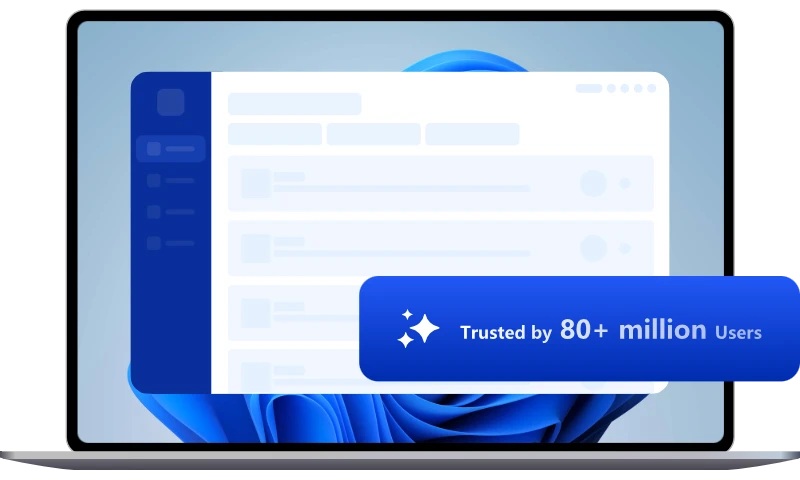Windows 11 issues mean it's not worth redesigning yet, say specialists
As for whether to upgrade to Windows 11, this article will give you some professional opinions.
Although the new UI design of Windows 11 is very desirable, industry experts (such as Gartner experts) advise people to be more cautious.
As reported by The Register, Stephen Kleynhans, vice president of research at Gartner, referred to Windows 11 as an outdated update, which did not provide enough new elements or changes. These features may only be provided as another element update of Windows 10.
In a rather sharp comment, Kleynhans said that Microsoft will release Windows 11 to obtain a marketing opportunity, rather than to release a new operating system.
Since Windows 11 has not brought any major changes, Kleynhans advises people, especially organizations, not to race to upgrade to the new operating system.
Slow but sure
Kleynhans suggested that organizations should develop a timetable for evaluating Windows 11, and then slowly switch to Windows 11 in the next year.
Kleynhans suggested that another option is to conduct a pilot test among the elected representatives to see if the users who participated in the test have a positive attitude towards Windows 11.
Although Windows 11 is not significantly improved compared to Windows 10, there are some differences, especially in the UI, which may cause confusion. By leisurely testing Windows 11 with a few representatives, you should be able to choose to identify (and rank) any possible issues before applying it to the entire employee.
This is a more reasonable approach than simply using Windows 11 for everyone at the same time and then trying to solve each problem immediately.
We also spoke to Kleynhans, and he let us know that the Windows 11s user interface may make progress in the long term, depending on customer criticism. The organization has done this before, and remember that any progress in the appearance and behavior of Windows 11s will not be as outrageous as the adjustments that took place between Windows 8 and Windows 8.1...observable changes.
Kleynhans suggests that by moving your representatives to Windows 11 too quickly, they may need to figure out how to use the Windows 11s introductory UI, and then need to adapt to any subsequent changes, and may encounter two expectations to absorb the information.
Although Kleynhans let us know that the danger of early acceptance is small and logical, he admits that most associations do not have a particularly convincing motivation to promote this progress. Soon, we will have a deeper understanding of the difficulties faced by the organization that Kleynhans introduced to us.
Investigation: wise guidance
In our opinion, taking a prudent strategy to upgrade to Windows 11 is the right way to accomplish the task. In our Windows 11 survey, we praised the operating system for many things, but no one rejected Windows 11 and it felt like a gradual update to Windows 10.
These milder changes mean that we may not see serious problems, and the redesign from Windows 10 to Windows 11 definitely does not torture the changes from Windows XP to Windows Vista like driver problems and application similarity problems. For example.
Nevertheless, as of now, Windows 11 still has problems, so upgrading to the operating system so close to scheduling will continue to bring a certain degree of danger, and your PC may encounter problems. For organizations with a large number of strategically significant PCs, these dangers are undoubtedly more clear.
Ransack Metcalf, head of cloud and infrastructure at ATech Cloud, told us how Windows 11 got a lot of development and examples from Windows 10, and because of these changes, many organizations will be forced to implement answers to redesign existing device firmware. Most of them are flawless to allow attempts to introduce operating systems.
Metcalf hinted that it is necessary for PCs to help TPM 2.0, which is a security highlight that some people with current PCs find that they cannot introduce Windows 11.
Metcalf tells us that since the necessity of secure boot and TPM 2.0 is only an option, not mandatory, organizations will need answers to make their gadgets viable in the new operating system. The exciting news is that most gadgets implied in the last five years should support it, but many have outdated firmware.
Scott Riley, the head of Cloud Nexus and an expert on Microsoft 365 and Azure, revealed to us that he recommends home customers to upgrade to Windows 11 because "the new spotless interface is a truly enjoyable redesign, and most of the things that happen later The scene is a lot of Windows 10."
Nevertheless, he let us know that he "will urge organizations to adopt a planned strategy to implement Windows 11... What we really want to consider is that not everyone in the business is at a similar level of education. Although it can There must be no huge changes, enough to make some customers feel a little embarrassed when they throw it on them." This is in full compliance with Kleynhans' suggestion.
"The exciting news is," Riley clarified, "There is no pressure to make an overhaul. Windows 10 will be maintained until October 2025, which gives organizations a lot of time to design updates."
Taking into account the limited new highlights brought by Windows 11, then, at this time, there is very little to get from the overhaul. In any case, similar to Windows 10, Microsoft will continue to update and develop Windows 11 in the coming months and a long time.
This should help solve most of the early problems while adding more elements to make the upgrade to Windows 11 more beneficial, which applies to both organizations and home clients. Regarding the upgrade to Windows 11, it is worth the delay for the time being.

